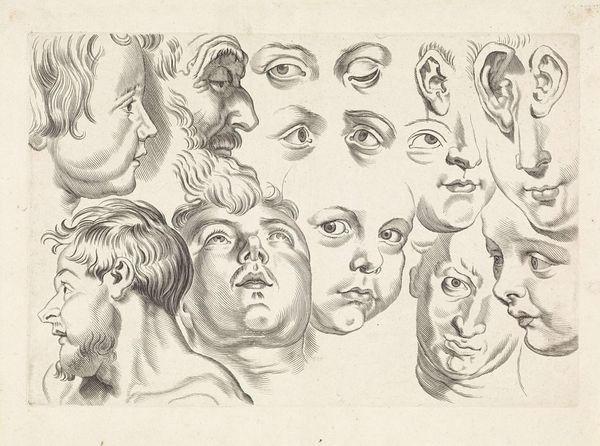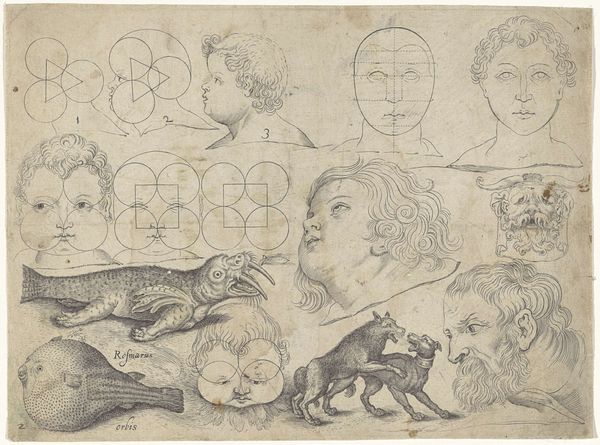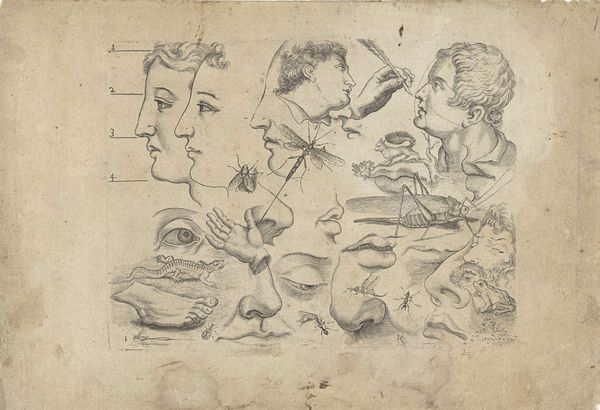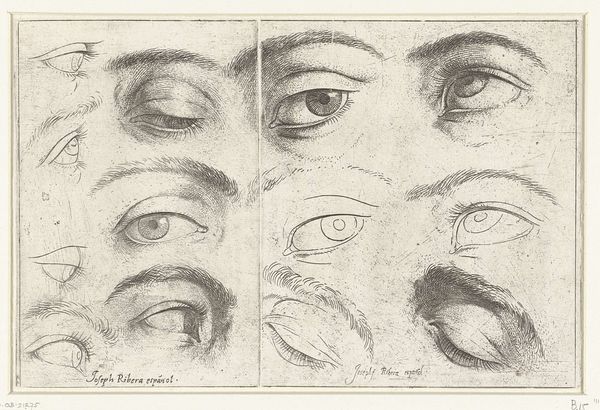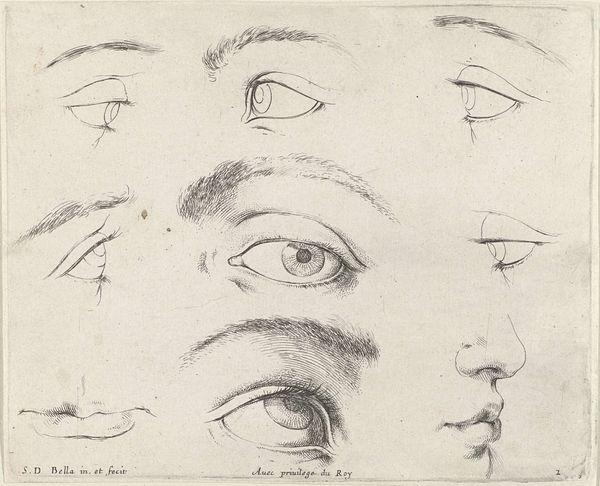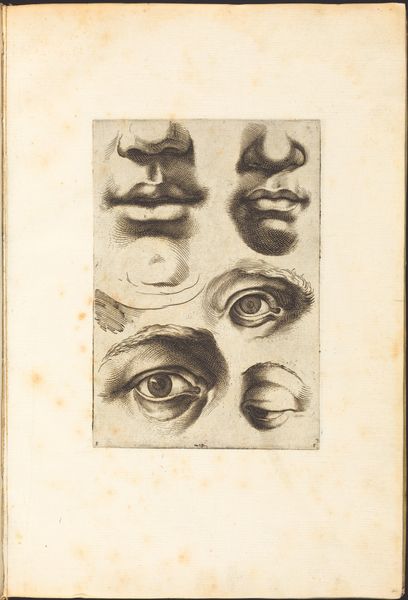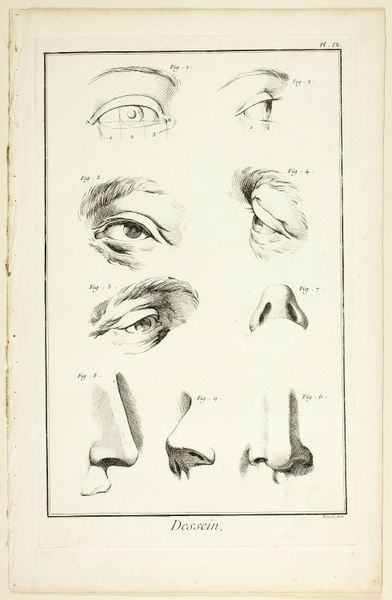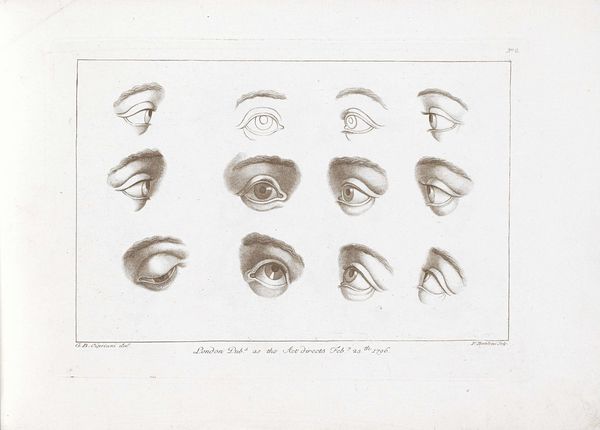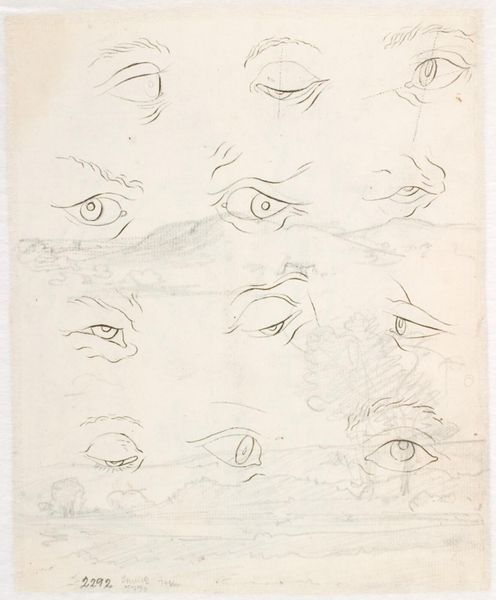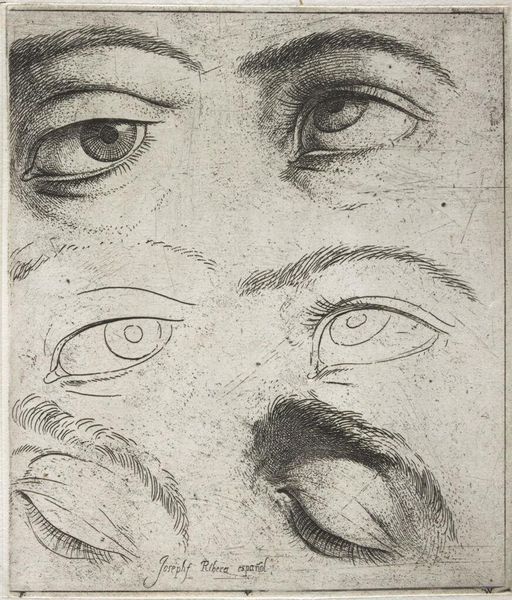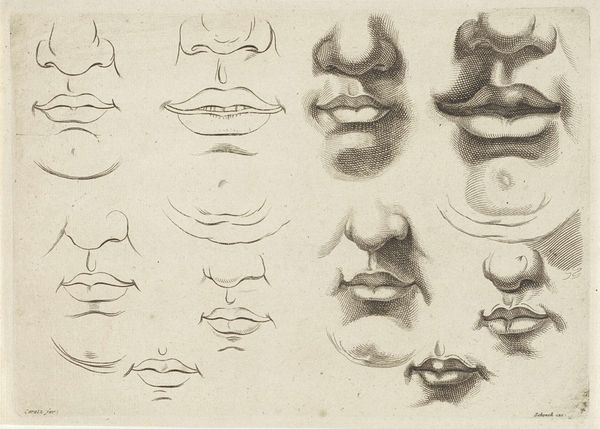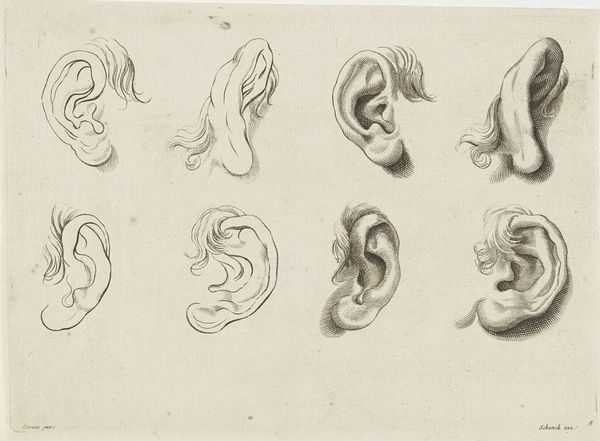
drawing, print, etching, paper, engraving
#
portrait
#
drawing
#
baroque
#
animal
# print
#
etching
#
classical-realism
#
figuration
#
paper
#
engraving
Dimensions: height 169 mm, width 211 mm
Copyright: Rijks Museum: Open Domain
Curator: This is "Studieblad met tekenvoorbeelden: ogen, koppen en dieren"—or Study Sheet with Drawing Examples: Eyes, Heads, and Animals—created sometime between 1610 and 1672 by Michael Snijders. It combines engraving and etching on paper. Editor: Intriguing! At first glance, the sheet feels like a rather intense, fragmented study of perception itself. The eyes scattered across the surface are immediately captivating. Curator: Indeed. The composition presents a curious juxtaposition of human and animal forms. Note the meticulous detail in the rendering of each element, from the subtle shading around the eyes to the texture of the animal's fur. Editor: Symbolically, the eye has, of course, been tied to observation and understanding for millennia. What do you make of its repetition alongside animals, some realistic, some, shall we say, fantastical? Are they a classical bestiary, an exploration of vision, or something else? Curator: I’d suggest focusing on the interplay between these discrete studies. The contrast creates an interesting tension. Look how the orientation shifts – a tilted head echoes the slope of a brow above an eye. It is a formal dance across the plane of the page. Editor: True. I find it suggestive that ears become points of entry, sprouting animals. Is Snijders hinting at what filters our knowledge? Or simply referencing old myths about the transmission of forbidden knowledge, tales heard, and thus absorbed? The inclusion of a chameleon, often symbolic of adaptation or deceit, only thickens the symbolic atmosphere. Curator: Perhaps the work exists as an instructional piece and offers practical insight into realistic representation of anatomy for students and apprentices? There’s great pedagogical potential here. Editor: Or is it that this era reveled in elaborate symbols and appreciated allegorical commentary—the animals a mirror to the human condition, reflecting back our foibles and aspirations? Curator: In the end, perhaps the strength lies not in definitively answering the symbolism, but in the enduring power of its formal qualities and representational technique to draw the eye and spark inquiry. Editor: Yes, precisely. The drawing’s enigmatic nature ensures we're still pondering the connection between looking and knowing, centuries later.
Comments
No comments
Be the first to comment and join the conversation on the ultimate creative platform.
